Are Swagbucks Discover Offers Worth It? Your Easy Guide to Big Rewards in 2025

Introduction: The Appeal of Big Rewards
In the vast world of online side hustles, few platforms are as well-known as Swagbucks. It has made a name for itself in the “get-paid-to” (GPT) industry, paying out over $780 million in cash and gift cards to millions of users. Many are familiar with common activities on the platform, like taking surveys or watching videos. However, there’s a section that promises even greater returns: Swagbucks Discover.
‘The Discover section showcases Swagbucks‘ most rewarding opportunities. Here, users can find offers to sign up for new services, play mobile games, or try products from partner companies in exchange for substantial payouts. Some activities can yield hundreds of dollars. This raises an important question for anyone looking to boost their earnings: Are these high-value Discover offers a ticket to extra cash, or are they a frustrating maze of glitches, hidden risks, and unfulfilled promises?
This guide provides a straightforward analysis to answer that question. It will delve into what these offers truly involve, their actual earning potential, the significant risks that often go unmentioned, and a step-by-step plan for navigating this challenging part of the Swagbucks experience.
Sign up for Swagbucks click here
Decoding Swagbucks Discover: A Field Guide to the Offers
“Discover” refers to a variety of activities where Swagbucks‘ partners pay users to engage with their products and services. Understanding the different kinds of offers is the first step, as each comes with its own level of commitment, risk, and potential reward.
Free & Low-Effort Offers

These are the simplest offers on the platform and serve as the entry point for many users. They usually require minimal commitment, such as signing up for a free e-newsletter, installing a free mobile app, or simply clicking a link to explore web content. For example, users can earn 50 SB (worth $0.50) for joining the Mucinex newsletter or 100 SB (worth $1.00) for getting an online auto insurance quote from Liberty Mutual.
The effort required is low, and the financial risk is nearly nonexistent. The main “cost” is the user’s time and the possibility of receiving promotional emails. While these offers won’t lead to significant earnings on their own, they help beginners get familiar with the Discover section. Experienced members often use them to meet their “Daily Goal” for bonus points. They are best thought of as the appetizers on the Discover menu—easy to consume but not very filling.
Mobile Game Offers

Among the most popular and potentially profitable Discover offers are those involving mobile games. The idea is simple: a user downloads a specific game, such as Rise of Kingdoms, World Series of Poker, or Grand Mafia, and must reach a certain in-game level or milestone within a set period (usually 30 days) to earn a reward that can be worth thousands of SB.
While advertised as “free to play,” these offers require a significant time commitment. The biggest risk is that achieving the gameplay goals can be incredibly difficult or time-consuming without making in-app purchases. Many games are designed to increase in difficulty as the player nears the final, high-paying goal, creating a strong urge to spend real money to succeed. The “free” label can be misleading; the true value of these offers must be calculated by balancing the potential SB reward with the considerable time investment and need for cash purchases. The complexity of these offers is so notable that entire Reddit communities and guides have emerged to share strategies for efficiently completing them.
Subscription & Free Trial Offers

This category involves signing up for a service, often with a free or deeply discounted introductory trial period. Common examples include meal kit delivery services like Blue Apron and HelloFresh or product subscriptions like Harry’s razors or the Dollar Shave Club. Users provide their payment information and receive a significant SB bonus in return for trying the service.
The main risk with these offers is financial: forgetting to cancel the trial before it renews automatically at the full, often expensive, price. Swagbucks’ guidelines state that users must provide a valid payment method and caution against using pre-paid credit cards, which could help avoid this risk. These offers require strong organizational skills. A user must carefully track trial end dates and understand the cancellation process. The “profit” from the SB reward is only realized if the user successfully navigates these terms and cancels in a timely manner, making these offers a test of personal time management as much as an earning opportunity.
Financial & Deposit Offers

These offers consistently promise the highest payouts on Swagbucks, often ranging from $50 to $100 or more. They require users to sign up for a new financial product, such as a Discover Cashback Debit account, a Chime bank account, or an Acorns investment account. Completing these offers often involves multi-step requirements, like making a minimum initial deposit or setting up a qualifying direct deposit from an employer.
This category carries the highest level of risk. Users must provide sensitive personal and financial information, including their full name, address, and Social Security Number (SSN), to open these accounts. The multi-step requirements can be complex and highly prone to tracking errors; a single failed step can invalidate the entire offer. There is also the risk of misinterpreting the terms; for example, a simple bank-to-bank transfer may not count as a “direct deposit,” which often needs to come from a payroll provider. These offers blend simple online tasks with significant financial decisions, and their complexity greatly increases the chance of issues arising with the reward crediting process.
“Moneymaker” Offers
“Moneymakers” are a specific category of paid offers where the value of the SB reward exceeds the required cash expenditure. For instance, an offer might require a $10 deposit into an investment app to earn 3,500 SB (worth $35), resulting in a net profit of $25 for the user. These “MM” offers are highly sought after and frequently discussed in user communities.
While they seem like a guaranteed win, moneymakers carry the same risks as other paid offers, including tracking failures, the need to manage and cancel subscriptions, and the chance of spending money without receiving a reward if the offer doesn’t credit correctly. They represent a high-risk, high-reward opportunity on Swagbucks. The promise of a guaranteed profit attracts many users, but this makes a tracking failure or a denial from customer support particularly painful since the user ends up losing real money. Success with these offers requires a high level of diligence and willingness to take risks.
The Upside: A Data-Driven Look at Earning Potential
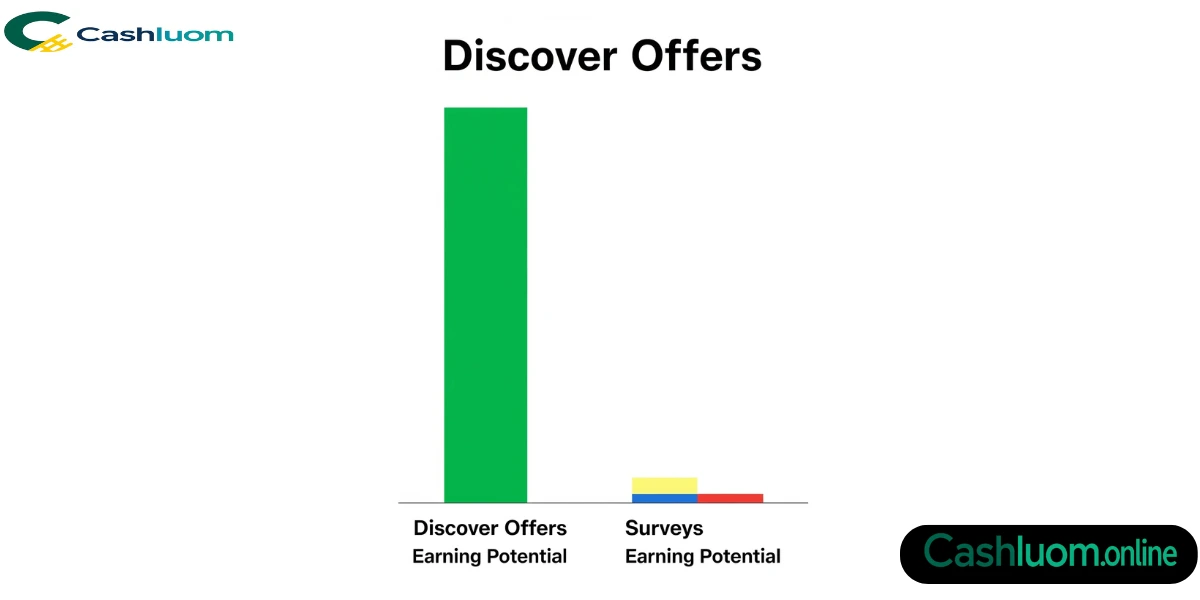
The Discover section’s main appeal is its unmatched earning potential within the Swagbucks ecosystem. While smaller tasks may yield just a few cents, a single successful Discover offer can significantly add to a user’s balance, with some offers valued at $100, $200, or more. This opportunity for large, lump-sum rewards sets Discover apart from all other earning methods on the site.
To ground this potential in reality, it helps to examine real-world examples of high-value offers featured on the platform. The following table analyzes several such offers, linking the advertised reward to the work and commitment required from the user. This provides a clear cost-benefit analysis, turning vague promises of “big rewards” into a practical decision-making tool.
SB Offers Table
| Offer Name | SB Payout | Dollar Value ($) | Requirements Summary |
| Chime Bank Account | 30,000 SB | $300 | Sign up for a new Chime account and set up a qualifying direct deposit. |
| Drive for Uber Eats | 20,000 SB | $200 | Sign up to become a new driver for Uber Eats and complete orders. |
| Rise of Kingdoms (Game) | 10,000 SB | $100 | Download the mobile game and reach City Hall level 18 within a specified time limit. |
| Blue Apron | 9,000 SB | $90 | Sign up for the meal kit subscription service. |
| Discover Cashback Debit | 8,000 SB | $80 | Open a new Discover Cashback Debit account and make a first deposit of $50 or more. |
| Acorns Investing | 5,000 SB | $50 | Download the Acorns app, sign up, and make an initial investment deposit of $5. |
(Note: SB payouts and offer terms are subject to change and may vary by user.)
When this earning potential is compared to other activities on Swagbucks, the unique position of Discover offers becomes clear.
Taking surveys is the most common way to earn on the platform, but the rewards are modest. Most surveys pay between $0.50 and $5.00. Users often face low qualification rates, with testing showing a success rate of only about 8% to 11%. This makes earning from surveys a slow and often frustrating process.
In contrast, a single successful high-value Discover offer, like those from Chime or Uber Eats, can be worth more than completing hundreds of surveys.
This comparison shows a key insight: Swagbucks is not a single platform but an ecosystem with varying levels of risk and reward. Surveys are low-risk and low-reward, best for consistent, small-scale earnings. Discover offers represent high-risk, high-reward opportunities that can give significant, infrequent boosts to a user’s balance. A smart user recognizes this dynamic and diversifies their strategy, using Discover offers for major earnings and other activities to bridge the gaps. For most users, a realistic and sustainable goal through these methods is between $2 to $5 per day, translating to $100 to $200 per month.
Navigating the Minefield of Risks and Complaints
Behind the appeal of high payouts lies a landscape filled with user-reported problems. Researching user complaints on platforms like Reddit and the Better Business Bureau (BBB) reveals a consistent pattern of issues that can turn a promising opportunity into a frustrating experience. These challenges are significant and should be considered part of the Swagbucks Discover experience.
The Four Complaints of Swagbucks Frustration
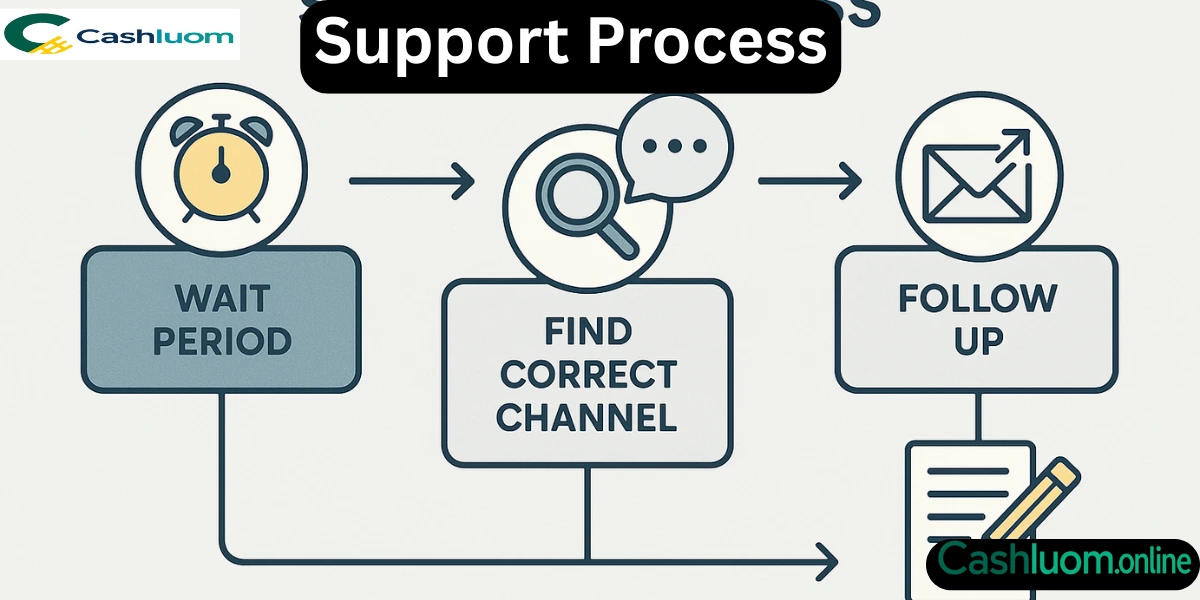
Four main types of complaints repeatedly arise from user experiences, representing the biggest risks of engaging with Discover offers.
1. The Tracking Black Hole
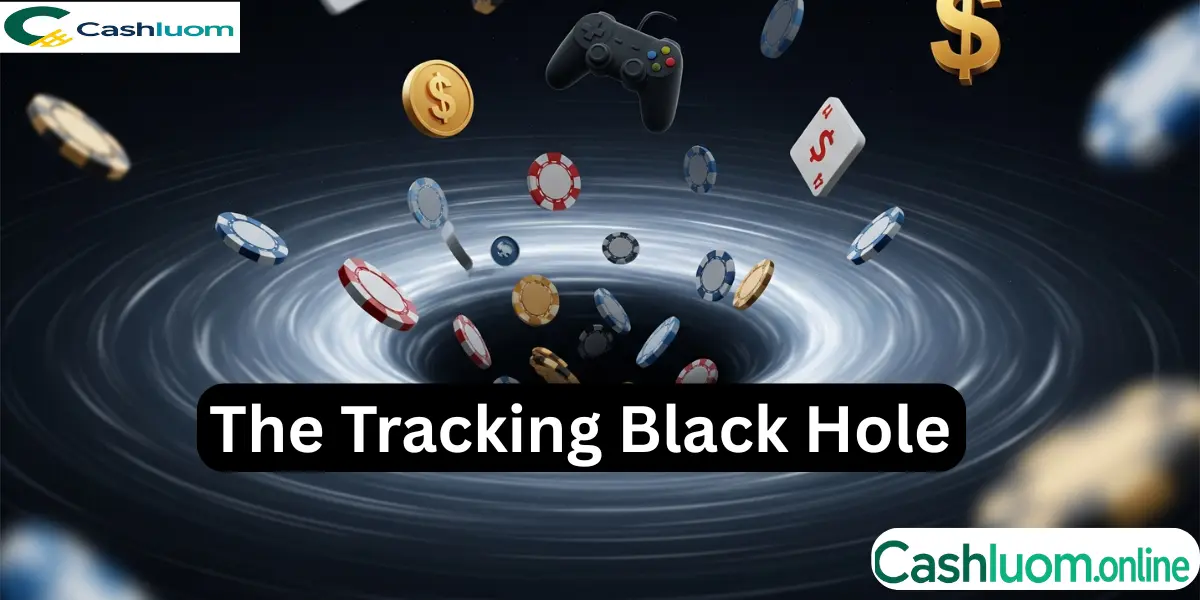
The most common and frustrating problem users face is that offers often fail to credit after completion. A user can carefully follow every step, whether installing an app, reaching a game level, or making a deposit, but the activity may not show up in their account as pending or completed. This issue is especially painful for time-consuming game offers or high-stakes financial offers involving real money.
Swagbucks’ help documentation acknowledges that this tracking system is fragile. Various technical factors can disrupt it, such as ad-blocking software, VPNs, browser privacy settings, switching devices mid-offer, or taking too long to complete steps after clicking the initial link. For complex financial offers, if the first step fails to track, all subsequent steps are likely to fail as well. This creates a disconnect: Offers are presented as simple actions, but the tracking technology is delicate. The system places the onus on users to ensure it works, often without them knowing the many technical issues that could cause it to malfunction.
2. The Customer Support Maze
When tracking fails, the only option is to contact customer support. This process is often described as a maze of delays and unhelpful responses. Common complaints include. Users often report being denied credit even when they can provide solid evidence of completion.
Though Swagbucks has a formal process for submitting support tickets with required proof, users find that this doesn’t guarantee resolution. Support agents may claim that the third-party advertiser did not confirm a successful completion, effectively ending the conversation and leaving the user without recourse. This creates a challenging situation: users need to provide proof, but support can still defer to the “tracking system” or the “advertiser,” both of which are opaque to the user. This leads to a significant imbalance of power where users have little ability to contest an automatic denial.
3. Hidden Costs and Commitments

The advertised value of an offer rarely tells the whole story. “Free trials” can bring hidden costs, leading to expensive recurring charges if a user forgets to cancel before the trial period ends. Some third-party offers have even been known to sign users up for costly weekly text message subscriptions without fully informed consent. Additionally, high-value financial offers require the submission of sensitive personal information like a user’s Social Security Number, carrying an inherent risk to privacy.
Another commitment is the potential for tax obligations. According to Swagbucks’ policy, if a user redeems $600 or more in a calendar year from activities considered taxable (most Discover offers fall into this category, while shopping cashback does not), the platform must collect the user’s tax information and file a Form 1099 with the IRS. The actual cost of an offer extends beyond the initial cash outlay; it also includes the mental effort of managing cancellations, risks to personal data, and potential future tax responsibilities.
4. The Ultimate Risk: Account Deactivation

The most serious risk a Swagbucks user faces is the sudden and irreversible deactivation of their account, resulting in the loss of all accumulated SB. This often happens without a clear reason, with Swagbucks citing vague violations of its Terms of Service. Complaints to the Better Business Bureau detail users losing hundreds of dollars worth of earned rewards, with no effective way to appeal. This penalty seems more common for high-earning accounts or just after completing a significant offer, leading many users to think they are being targeted to avoid large payouts. This highlights the power imbalance of the platform: users invest time, money, and personal data, but Swagbucks can terminate the relationship and take all earnings without a transparent due process. This is the greatest risk of using the platform.
A Strategy for Maximizing Rewards and Reducing Risk
While the risks with Swagbucks Discover are considerable, they can be managed. The key to success is not luck but a systematic approach that anticipates potential issues. This strategy offers a clear framework for improving your chances. It turns the process from a gamble into a calculated effort.
Phase 1: Pre-Mission Briefing
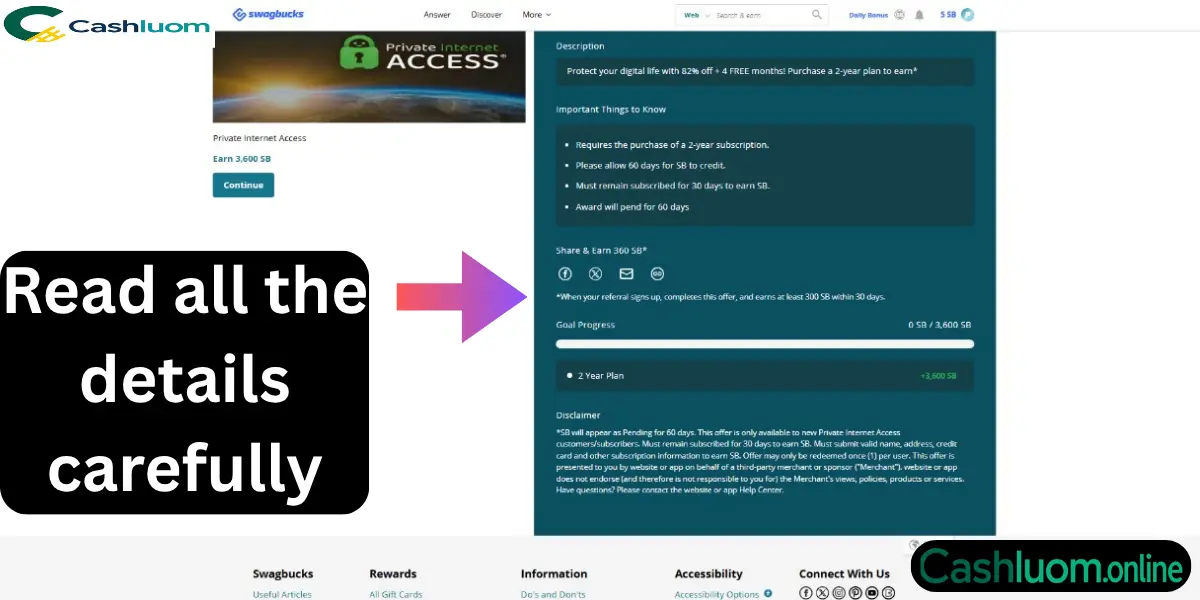
Before clicking on any offer, thorough preparation is vital.
Research Everything: Don’t start an offer blindly. Before committing, especially to game or high-value financial offers, search for the offer’s name on the r/SwagBucks subreddit. Look for recent user guides, discussions about completion times, and, importantly, any complaints. If multiple users mention that a game’s difficulty has recently increased or that an offer is failing to track, it’s wise to steer clear.
Read the Fine Print: Each offer has a “Special Terms” or disclaimer section. Read it carefully. Note the exact requirements (e.g., “must reach level 18”), time frames (e.g., “within 30 days”), and any critical exclusions (e.g., “new users only,” “deposit must be a qualifying direct payroll deposit”). This information serves as your contract for the offer. Breaking any part of it will void your reward.
Phase 2: Technical Preparation
The weaknesses in the tracking system mean you need to create an ideal technical setup.
Use the Right Browser: Choose a standard browser like Google Chrome, which supports tracking-friendly default settings. For maximum safety, use a separate Chrome profile or its “Guest Mode” for all Swagbucks activities. This keeps the session isolated from other extensions or cookies that might interfere.
Disable All Blockers: Before clicking the offer link, temporarily disable all ad-blockers, pop-up blockers, script blockers, and VPN services. These tools are designed to stop the very tracking that Swagbucks depends on to credit your account.
Configure Device Settings Correctly:

On iOS (iPhone/iPad): Navigate to Settings > Privacy & Security > Tracking and ensure the toggle for “Allow Apps to Request to Track” is turned ON. When installing a game or app from an offer, if a pop-up asks for permission to track, tap “Allow.” Additionally, go to Settings > Safari and turn off “Prevent Cross-Site Tracking.”
On Android: Open the app’s settings and ensure it has all the necessary permissions to function and track properly.
Accept Cookies: When you visit the offer partner’s website, a cookie consent banner will usually appear. Always click “Accept All” or the equivalent. Refusing cookies will disrupt the tracking chain.
Use a Single Device for Everything: Start the offer and complete all necessary steps on one device (e.g., your phone). Don’t click the link on your phone and finish the sign-up on your laptop, as this could confuse the tracking system.
Phase 3: Active Mission
Assume that every offer might fail to track, and prepare your evidence accordingly. This habitual practice is crucial for protecting your earnings.
Screenshot Everything: This practice is highly recommended by experienced users. Create a dedicated folder for each offer and save screenshots of:
– The original Swagbucks offer page, clearly showing the SB reward amount and all terms.
– The confirmation email is received after signing up, making a purchase, or depositing funds.
– For game offers, take a clear screenshot showing the in-game screen when reaching each required level or milestone.
– For deposit offers, a screenshot from your bank account showing transaction details (date and amount). It’s acceptable to black out sensitive information like your full account number.
Check Your Activity Ledger: After clicking an offer link, visit your Swagbucks “Activity” page and confirm that the click appears in the “Visited” tab. This indicates that tracking is working. For multi-step offers, confirm that each completed goal shows up in your “Pending” ledger before proceeding to the next step. If a step doesn’t appear,
STOP. Do not continue with the offer; instead, move right to the support process.
Phase 4: The Exit Strategy

Successfully earning SB from trial offers is only half the challenge; you must also avoid unwanted charges.
Set Calendar Alerts:
As soon as you sign up for a free trial, open your calendar and set a reminder for two or three days before the trial expires. This gives you enough time to cancel.
Understand Cancellation Terms:
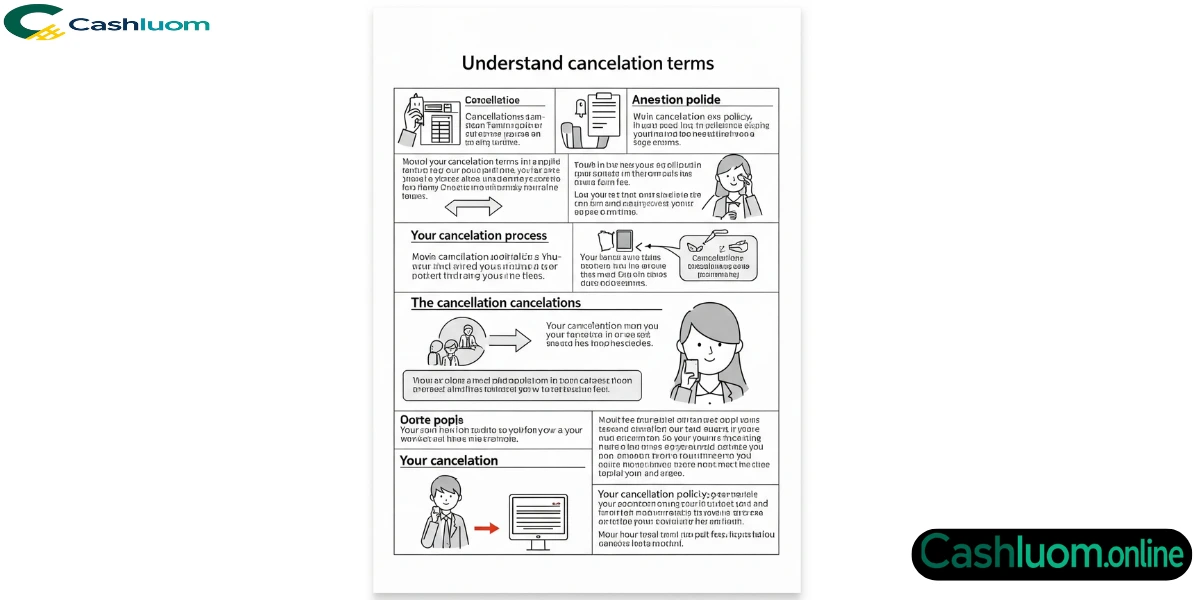
Read the partner’s cancellation policy. Some offers may have a “quick cancel” clause in their Swagbucks terms, which can take away your SB if you cancel the service too soon (for example, within the first month). To be safe, many users suggest keeping a subscription for at least a month, even if it means paying for one cycle, to secure the reward.
Use Disposable Information (When Appropriate):
For low-value offers that only require a sign-up without payment details, consider using a secondary email address or a free Google Voice phone number. This protects your main accounts from spam.
When It Goes Wrong:
Your Step-by-Step Guide to the Support Process
Even with perfect preparation, the tracking system can fail. When an offer doesn’t work, be ready to navigate customer support effectively. Here is the process to follow.
Step 1: Wait the Appropriate Amount of Time
Don’t rush to submit a ticket right away. Swagbucks and its partners often have delays in reporting and crediting completed activities. Check the offer’s terms for a specific crediting window. For example, a financial offer might state, “SB will appear as Pending for 14 days after your deposit is successfully accepted.” Submitting a ticket before this period is over will likely lead to a request to wait longer.
Step 2: Locate the Correct Support Channel
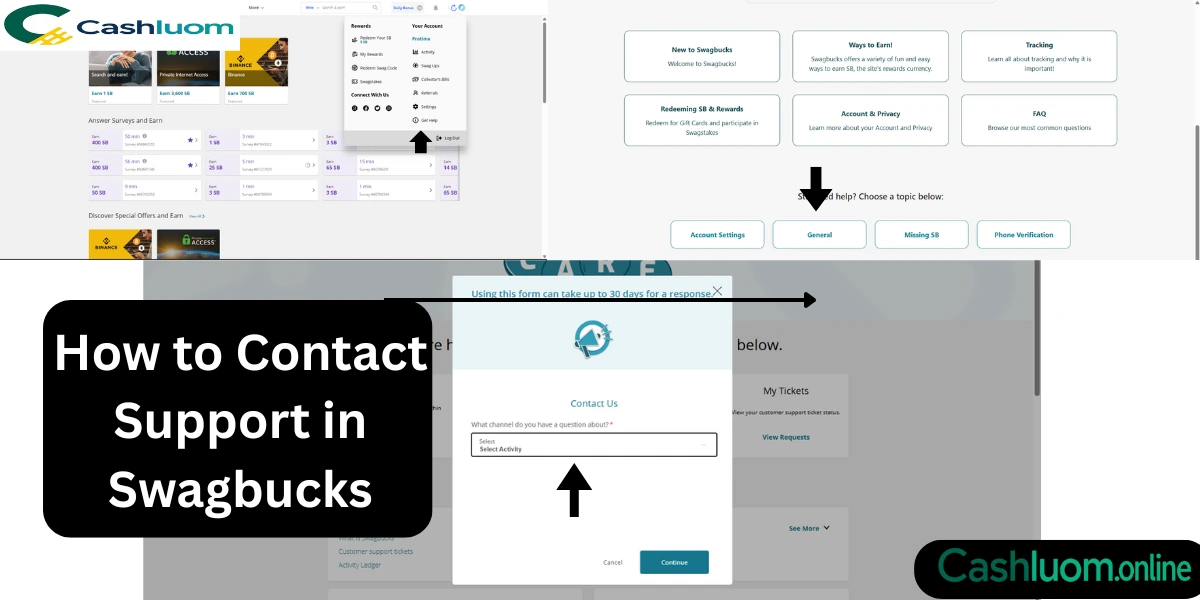
Where you submit your ticket matters. There are two main paths:
For Direct Swagbucks Offers: The best way is to submit your ticket directly from your account’s activity log. Go to your “Activity” page, find the offer in question under the “Visited” tab (if it has never gone pending), and click the small arrow to see more details. You will find a link that says “Contact Customer Support” or “Request Help.” Using this link connects your ticket directly to that specific activity, which Swagbucks claims helps resolve issues faster.
For Third-Party Offer Walls (e.g., RevU, AdscendMedia, TOROX): If you completed an offer through a partner wall in the Discover section, you must contact that partner’s support team first, not Swagbucks. These offer walls have their support systems. For example, RevU has a “Support” button on its offer page that shows your click history and lets you file a report for a specific offer. Only if the partner fails to resolve your issue within 10 business days should you reach out to Swagbucks support, providing the ticket number you received from the third party.
Step 3: Craft the Perfect Support Ticket
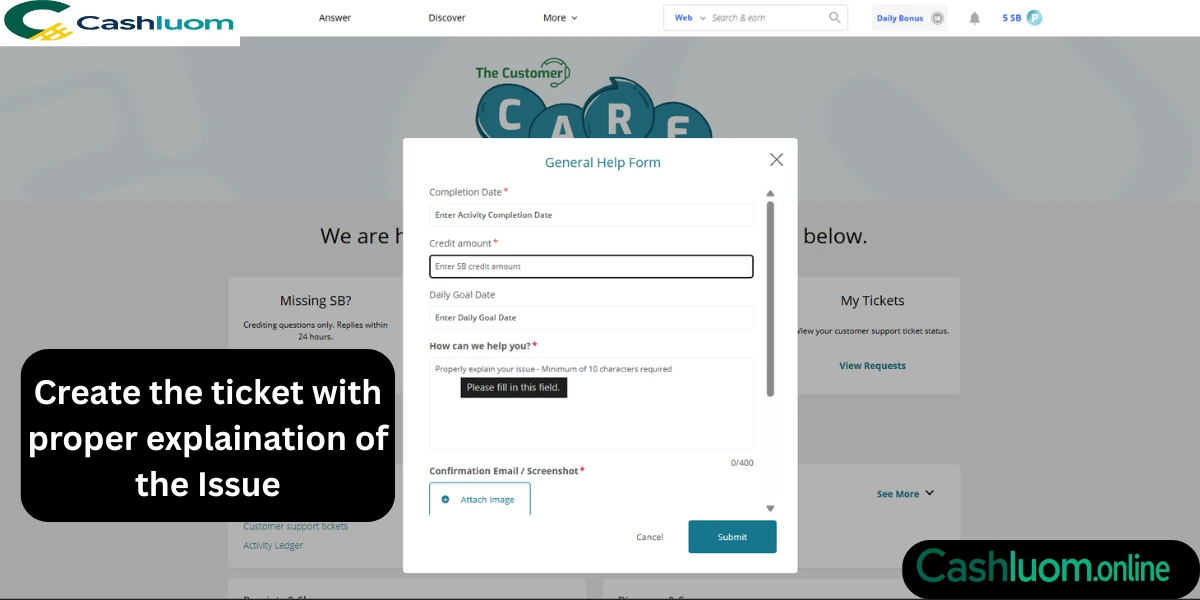
The quality of your support ticket can greatly affect the outcome.
Be Polite, Professional, and Concise: Clearly and calmly state the facts. Avoid emotional or angry language.
Provide All Key Information Upfront: In the ticket form, include the exact name of the offer, the date you completed it, and the specific amount of SB you are missing.
Attach Your Evidence: This is where your careful documentation becomes crucial. Attach all relevant screenshots you collected: the original offer page showing the terms, your confirmation email, and your proof of completion (for example, game level or deposit transaction). For offers involving physical products, you may need to provide a photo of the item with its shipping label.
Step 4: Be Persistent and Patient
Resolving a ticket often involves waiting.
Follow Up on Your Ticket: After you submit a ticket, Swagbucks will send an automated email. Many users reply to this email to confirm the ticket is active and prevent it from being closed automatically. If you don’t receive a substantive response within a reasonable timeframe (like a week), politely reply to the same email thread to request an update.
Know Your Last Resort: If your ticket is denied despite providing solid proof, your options narrow. As a final step, some users escalate their complaint to the Better Business Bureau (BBB). While this might prompt a response from a higher level of support, success isn’t guaranteed, and the company may simply repeat its initial denial.
The Final Verdict: Are Discover Offers Truly Worth It?
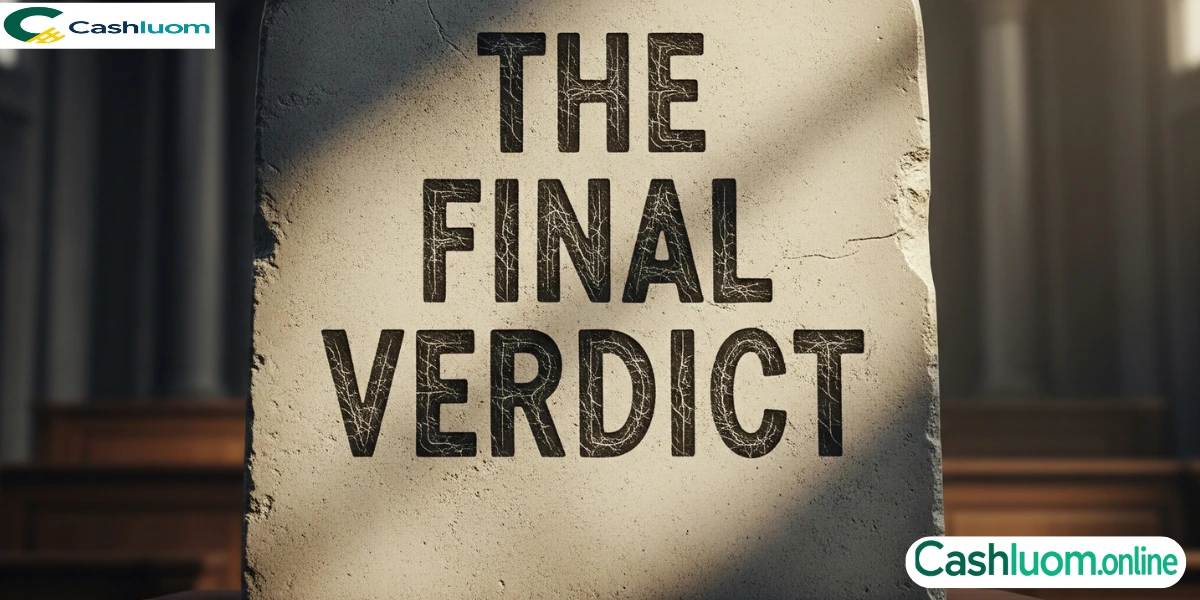
After a thorough look at the earning potential, significant risks, and strategies needed for success, a clear picture emerges. Swagbucks Discover offers provide the highest earning potential on the platform, but they also carry the highest risk of technical failure, frustrating support interactions, and even financial loss. Whether they are “worth it” isn’t a simple yes or no; it depends entirely on the user.
The key takeaway is that success with Discover offers isn’t about finding “easy money,” but about making a “calculated effort.” The term “easy” is misleading. This is an active side hustle that requires effort, organization, technical awareness, and a high tolerance for risk and frustration. It is a process to manage, not a game of luck.
The Profile of a Successful Discover User
The kind of person most likely to find these offers worthwhile has specific traits:
Patient and Methodical: They are willing to spend time researching an offer on community forums before clicking the link.
Highly Organized: They keep detailed records, take screenshots at every step, and use calendar alerts to track trial cancellation dates.
Technically Literate: They can navigate browser and device privacy settings to create conditions that work well for tracking.
Resilient and Persistent: They can handle frustration and are ready to patiently and systematically go through the customer support system when an offer fails to credit.
The Profile of a User Who Should Avoid Discover Offers
On the other hand, these offers are likely to frustrate people who are:
Looking for Quick, Effortless Cash: These offers are not “fire and forget.” They need active management and follow-up.
Easily Frustrated by Technology: If troubleshooting browser settings or preparing evidence for a support ticket sounds daunting, this isn’t a good fit.
Disorganized: Forgetting to cancel a single subscription trial can easily erase all the earnings from several successful offers.
Final Recommendation
Swagbucks Discover offers can be a great way to earn substantial rewards, but only for the right person with the right strategy. They should be treated not as a game of chance, but as a systematic process. A thoughtful user will start small with low-risk free offers to understand the platform’s quirks and master the documentation process. From there, they can move on to game or trial offers once they feel confident in managing the risks. The highest-risk financial offers should only be attempted by experienced users who grasp the complexities and are willing to accept the potential for loss.
Want to sign up for Swagbucks? Click here
By following the expert playbook in this guide, a user can significantly improve the odds in their favor, manage the inherent risks, and turn the promise of big rewards into reality.

Professional Experience. Udit has been working since 2021 with multiple online earning platforms, including survey websites and affiliate tools. He also brings hands-on experience in software testing and digital tools.Finance Knowledge. With a strong interest in financial trends and tools, Udit shares insights through his platform, ELRA News, helping readers stay informed about online income and finance.More About Him. In his free time, he explores AI tools, researches new earning opportunities, and creates content to guide others in the digital space.
